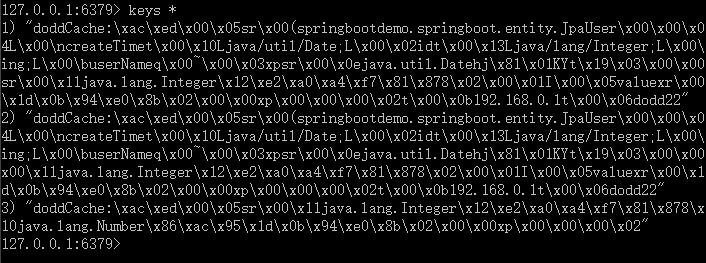介绍
EhCache更多的是在本地做缓存,redis做集群比EhCache简单轻量。
pom文件引入:
1 | <dependency> |
配置文件:
1 | spring.cache.type=redis |
缓存使用优先级:
默认按照 spring boot 的加载顺序来实现
- Generic
- JCache (JSR-107)
- EhCache 2.x
- Hazelcast
- Infinispan
- Couchbase
- Redis
- Caffeine
- Guava
- Simple
配置文件优先于默认
通用注解:
redis缓存和EhCache缓存实现使用注解相同。redis做缓存的对象需要序列化。
所以一种实现方式是使用上一节ehcache的缓存策略和测试类测试接口等,测试结果如下:
查找:

更新(2次更新):

redis自定义缓存管理器:
1 | /** |